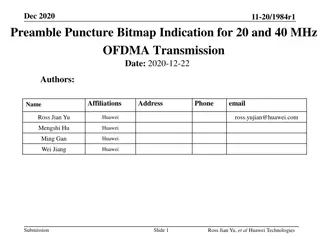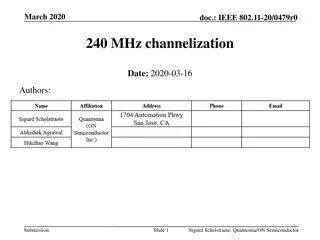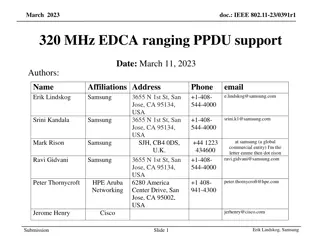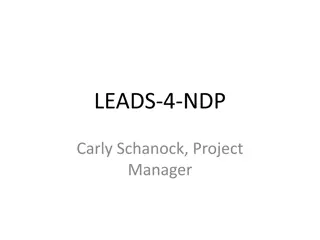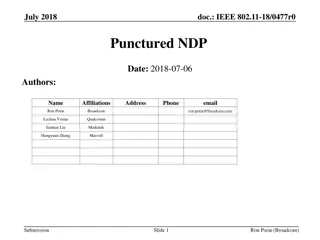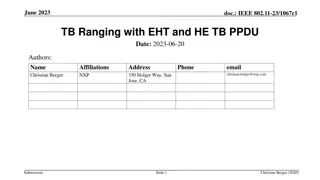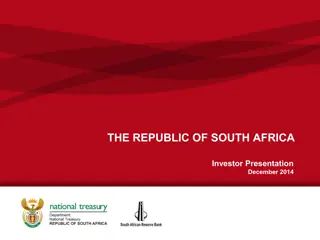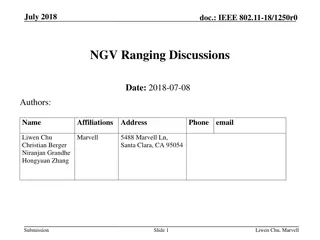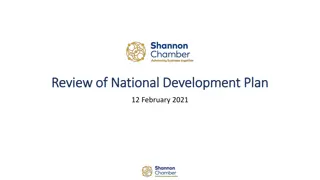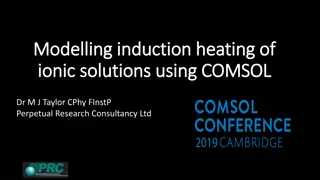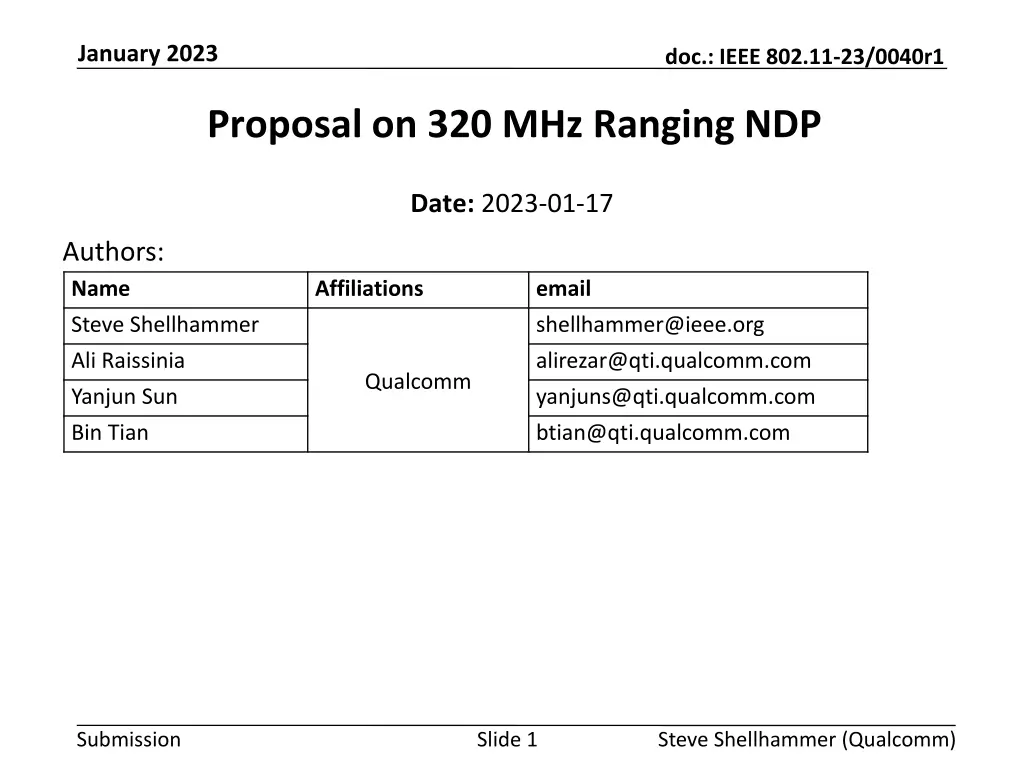
Proposal for 320 MHz Ranging in IEEE 802.11
This proposal focuses on enhancing support for 320 MHz Ranging in IEEE 802.11 standards, specifically addressing the 320 MHz Ranging NDP and TB Ranging NDP. It builds upon previous standards like 802.11az and 802.11be to introduce new features and improvements for more efficient and secure ranging processes.
Download Presentation

Please find below an Image/Link to download the presentation.
The content on the website is provided AS IS for your information and personal use only. It may not be sold, licensed, or shared on other websites without obtaining consent from the author. If you encounter any issues during the download, it is possible that the publisher has removed the file from their server.
You are allowed to download the files provided on this website for personal or commercial use, subject to the condition that they are used lawfully. All files are the property of their respective owners.
The content on the website is provided AS IS for your information and personal use only. It may not be sold, licensed, or shared on other websites without obtaining consent from the author.
E N D

